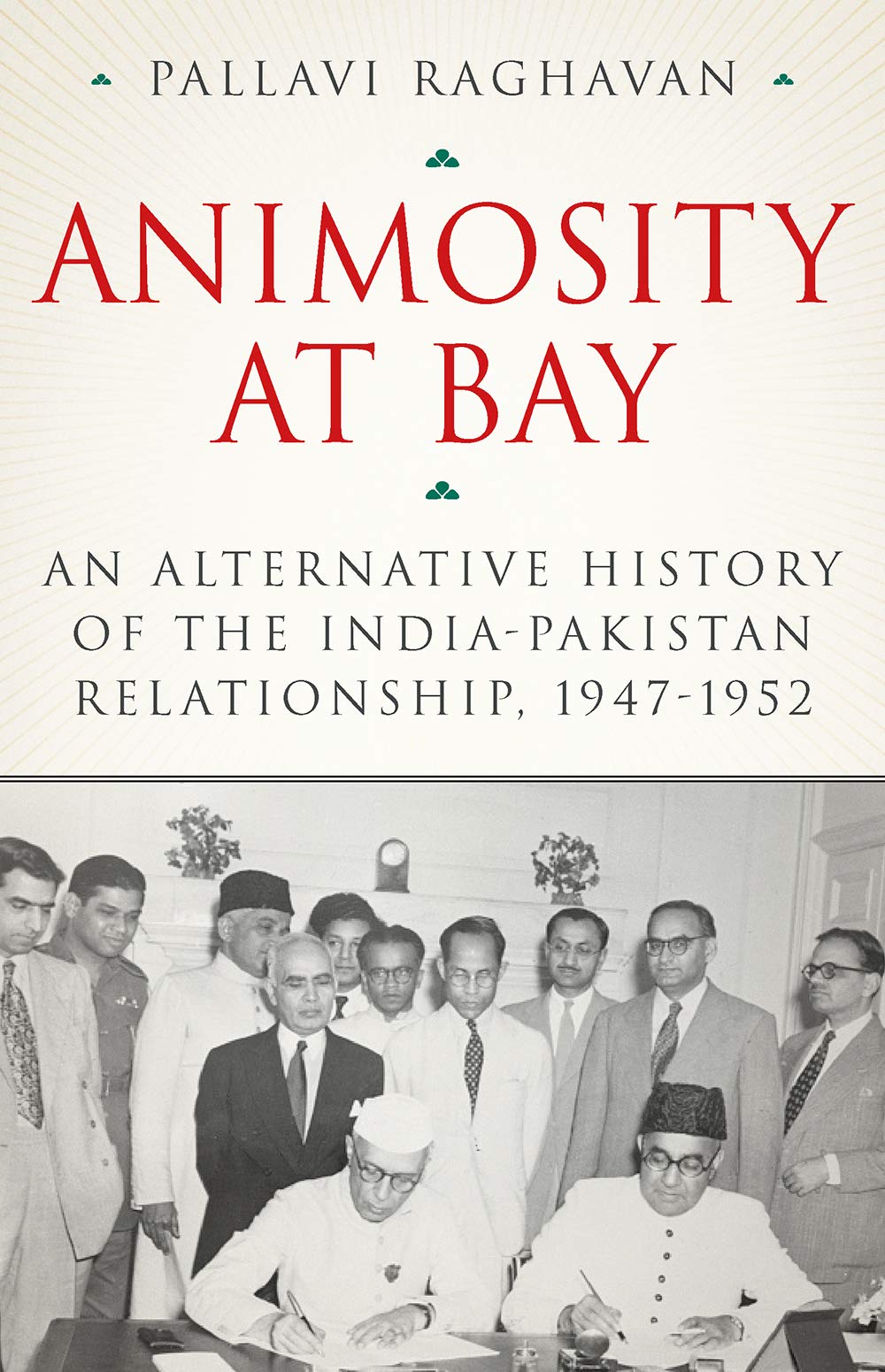When Foes Spoke
Pallavi Raghavan
22 June 2020When Foes Spoke
Karthik Nachiappan
Animosity at Bay:
An Alternate History of the India-Pakistan Relationship, 1947-1952
By Pallavi Raghavan
HarperCollins Publishers India/C Hurst & Co Publishers, 2020
Is there hope for India-Pakistan relations? Most analysts studying the relationship today would say no. A 70-year history of wars, insurgencies and an unyielding nuclear rivalry point to a future that looks bleak. However, how these two estranged siblings deal with each other now pales in comparison to the progress and cooperation that characterised the early years of their bilateral relationship from 1947 to 1952 where diplomacy trumped conflicts, and agreements were signed, one after another, on issues ranging from water to evacuee property rights, minority rights and abducted women. Both countries also discussed a historic no-war pact, which ultimately failed. The first five years of diplomacy were, if anything, like a mirage where extraordinary pressures unleashed by Partition and the need to solidify fledgling states drove both countries to cooperate.
This alternate history is captured cogently by Pallavi Raghavan in her new book Animosity at Bay: An Alternate History of the India-Pakistan Relationship, 1947-1952 (Harper Collins/Hurst). The question of how India and Pakistan have managed their affairs in the aftermath of Partition could seem unimportant to most readers or analysts outside the subcontinent. It is not. The critical juncture explored in the book influenced the contours of the India-Pakistan relationship and it is necessary to unpack what those early years of diplomacy were like to carefully assess how things have unravelled since then. Raghavan’s book is vital for those looking to understand that the relationship between India and Pakistan was not always consumed by vitriol and enmity and there was cooperation and dense institutionalised interactions over a number of critical issues.
A key part of the book focuses on the 1950 Nehru-Liaquat Pact, an agreement that has returned to the news with India’s recent Citizenship Amendment bill, which seeks to give certain minority groups in neighbouring states access to India. The 1950 pact, however, ought to avoid this situation by pushing states to protect the interests of minorities in their countries. How both countries managed the population transfer given the volatile political climate is instructive reading when considering how things have gone awry now. And how leaders in both countries regarded minorities in each other’s territories then, perhaps, show how far and how much animosity has clouded perceptions today. Another notable achievement was the 1960 Indus Waters Treaty that tilted in favour of Indian Prime Minister Jawaharlal Nehru who managed to acquire some water from Pakistan for agricultural use.
One reason why these agreements came to light, as Raghavan argues, was the focus and emphasis both countries gave on state-making. In other words, it is hard to make sense of India and Pakistan’s diplomatic interactions in the early years without understanding the political questions and challenges that revolve around state-building and development, particularly around questions of sovereignty, citizenship and minority rights, gender, property rights and water which are tackled through the book. Negotiations were a key part and path for both countries to consolidate statehood and constraints around that objective.
State-building also affected how both countries traded with each other as captured in a useful chapter on trade and financial relations. Trade between both countries clashed with the development and industrialisation strategies that both nations had chosen to adopt. The political economy of development intersected with state-making to constrain cross border trade and efforts to that end. Political self-sufficiency trumped economic self-sufficiency. All these issues were part of a state-building effort that required resolution through bilateral negotiations, not dissimilar to challenges India has faced through the decades, on issues related to foreign aid, market access, climate change and so on. As this book shows, questions of statehood, state-building and political economy, also related to trade, influenced and constrained Indian foreign policy from 1947 to 1952.
While both countries discussed a whole slew of issues, a Cold War was taking hold, threatening to split the world into two blocs. These developments also influenced diplomacy between India and Pakistan. The Cold War had a constraining effect not only on how both states interacted with each other, but also how they fashioned a strategic relationship with the United States and the Soviet Union. Yet, the impact of the Partition and the Cold War also had its limits. For instance, the no-war pact that was discussed in 1950, a seemingly historic proposition, failed but the book does not adequately consider why. This failure shows that there were clear limits to bilateral cooperation since the underlying international context and ostensibly the domestic politics were not entirely distinct when compared to other agreements signed. Then why did the no-war pact fail? Did other groups or actors in either country nix the idea? Or was there a foreboding sense that India’s trajectory would be distinct from that of Pakistan, which shifted the calculus in Islamabad? Did Pakistan consider itself the weaker country, which influenced how it pursued its claims? The book leaves these questions for the reader to ponder.
Raghavan’s book covers an understudied period of fleeting yet significant cooperation between India and Pakistan. Despite their quarrels and insecurities, cooperation occurred driven by extraordinary events like the Partition and incumbent pressures related to state-building. Given these unique conditions and the history that has unfolded thereafter, one can perhaps expect little cooperation between both countries now and ahead.
. . . . .
Dr Karthik Nachiappan is Research Fellow at the Institute of South Asian Studies (ISAS), an autonomous research institute at the National University of Singapore (NUS). He can be contacted at isaskn@nus.edu.sg. The author bears full responsibility for the facts cited and opinions expressed in this paper.
-
 More From :
More From :
-
 Tags :
Tags :
-
 Download PDF
Download PDF


